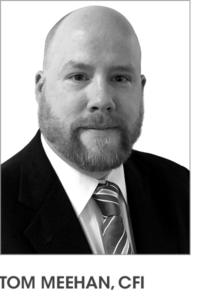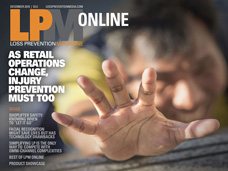(This article originally appeared in Loss Prevention Magazine Online)

For some, facial recognition is only known in movies and television. To them, it is an imagined technology that allows one to identify someone using a computer to recognize a face. However, today, facial recognition is making a significant impact in multiple industries including healthcare, marketing, security, law enforcement, and even retail.
For most people, their contact with facial recognition technology is from their smartphone’s security features, how Facebook knows whom to tag in photos, or when passing through electronic passport gates. Nevertheless, whether we like it or not, our face is becoming a critical tool when accessing information and possessions.
In different sectors, facial recognition can be used to gather more information about consumer markets such as retail, gaming, and events. One of the applications facial recognition is increasingly used in is targeted marketing. Some businesses utilize facial recognition software to show ads based on the customers’ age and gender, showing the tech’s use in providing more relevant advertising. Some feel that this use is an invasion of privacy.
When it comes to security and safety, most understand and welcome facial recognition. Additionally, many airports around the world are using it to speed up the check-in process while also providing the added security.
The Secretive Use of Facial Recognition Software in Retail and Security Industries
In the US, if one is attending prominent establishments such as Madison Square Garden, it is more than likely that his or her face has been photographed. Depending on the location and when the picture was taken, your face will be analyzed and checked against varying databases. Mainly a database that checks an individual’s criminal background or lack thereof.
One may not realize it, but the same technology is most likely used all over the city, possibly across the country. Why are our pictures taken? Is that right? Is it a violation of our privacy? Many people share similar concerns, but since it was first developed in the 1960s, facial recognition has quickly risen to popularity as an essential security tool.
Initially, it was popular with the police for over a decade. In the last couple of years, however, facial recognition technology has also taken off with retailers as a way to stop shoplifting and organized retail crime (ORC). To the public, it was deemed as an essential security tool as it does help in quickly identifying wanted individuals and possible terrorists at public places.
The technology of facial recognition, when regulated, can indeed save many lives and is useful in multiple ways. Nonetheless, there is the fact that this technology is almost entirely unregulated. It is often used in places where millions of people gather and are subjected to the technology, unaware of what data is collected, who can access it, or how it’s used.
One high-ranking police executive who wished to remain anonymous said, “We use facial recognition daily, and it has helped us solve many crimes. We also have a human verify a potential match 100 percent of the time. It’s just one of the many tools we use. Several states use facial recognition in conjunction with driver license photos to solve crime.”
The Dangers of Facial Recognition Technology
Facial recognition is effective in strengthening security. However, as a technology, it is also susceptible to the same security concerns as other technology. While it is harder to compromise than voice or fingerprint recognition software, it also has its limitations. Facial recognition technology is not 100 percent accurate. Moreover, masks, glasses, long hair, and other obstructions can hinder its use.
Therefore, even though it is useful in easily and quickly recognizing faces, its efficiency depends on the software used and placement of cameras. Besides certain limitations in its function, a more serious issue regarding its use is its invasion of privacy. To be watched, have your face photographed, and maybe even entered into some database is an invasion of privacy.
Many people and organizations consider facial recognition to be a corporate invasion of privacy. Facial recognition apps can protect you from criminal suspects, but it cannot guarantee your protection against violation of privacy. Concerns about privacy are looming large, especially now in the internet age.
The concerns about facial recognition stem from how facial recognition apps, together with surveillance cameras, can very well track every move of an individual. When your data is gathered, combined, and then analyzed, a person’s activities and recent locations can easily be easily tracked and found. Facial recognition apps are not all bad. It is undeniable that they have practical uses, particularly in this age.
However, the misuse of these tools easily taints people’s perception about the technology, causing them to shy away from its use. The usage of face recognition continues widespread, but it is unsurprising how many people remain against it until it is properly regulated. It is my opinion that in the next three years as it becomes widely used at airports, borders, and transportation hubs, it will become acceptable to most. When the fingerprint reader was introduced years ago, the concerns were similar and have virtually gone away with that technology’s wider adoption. I think the same will occur with facial recognition.


